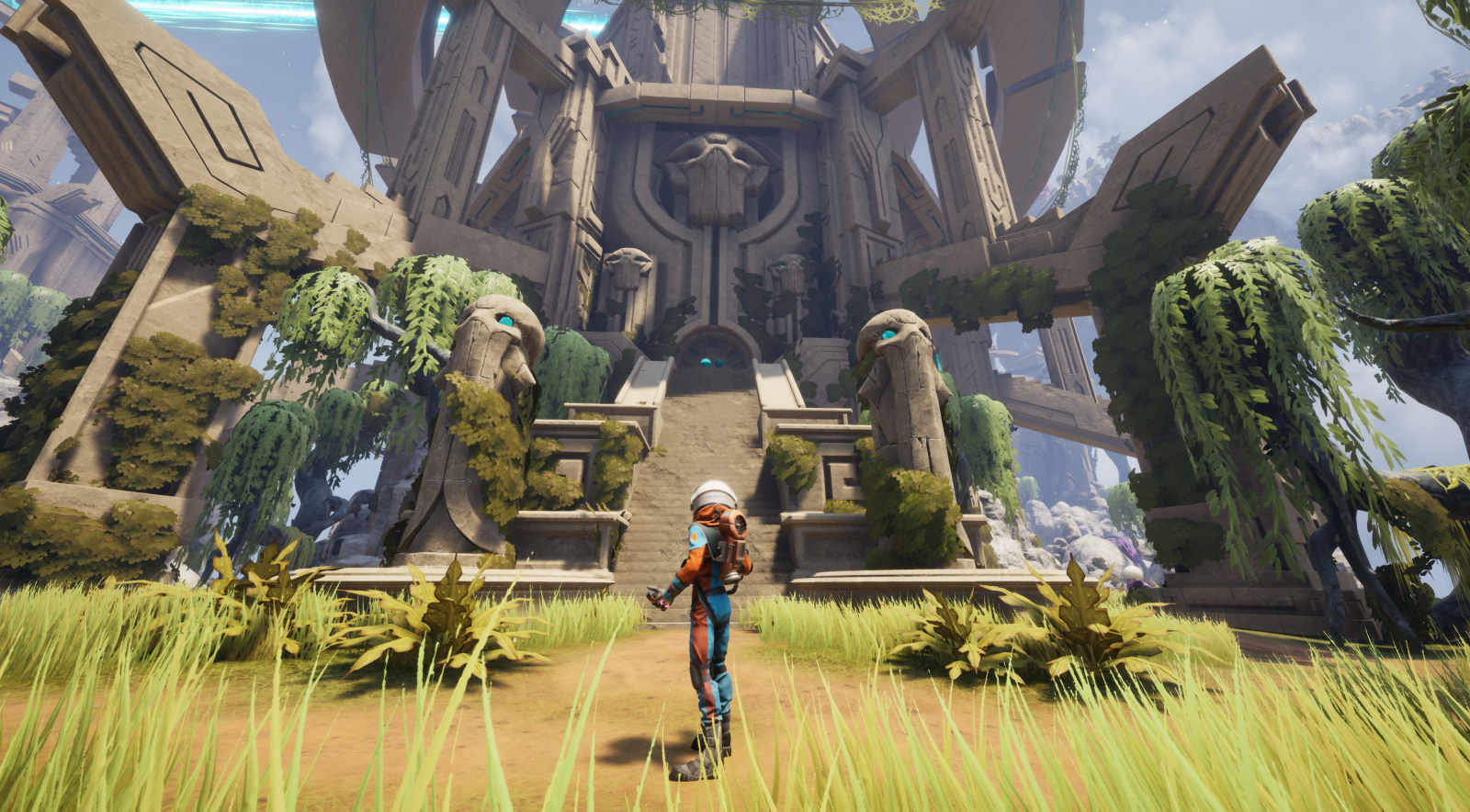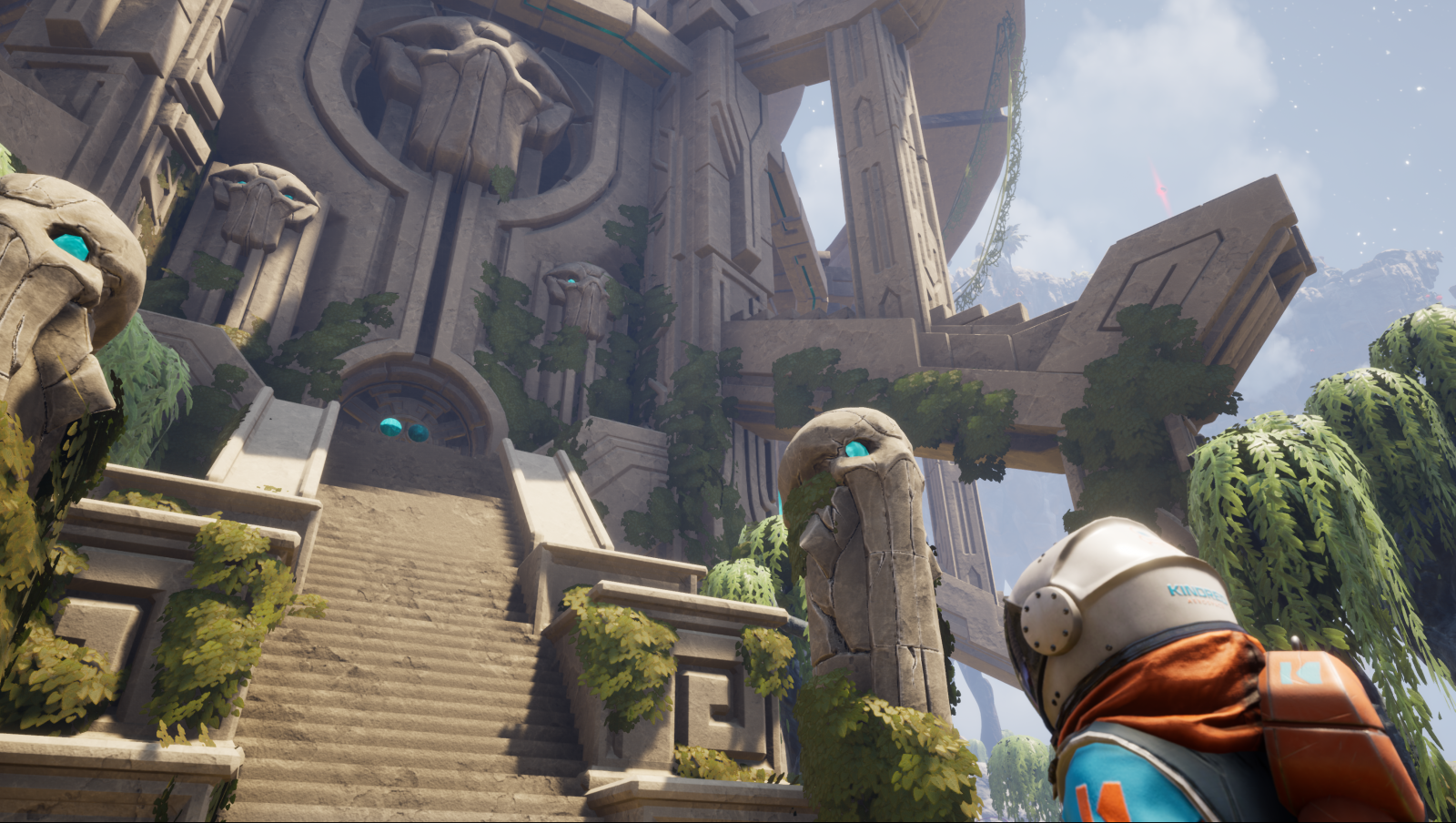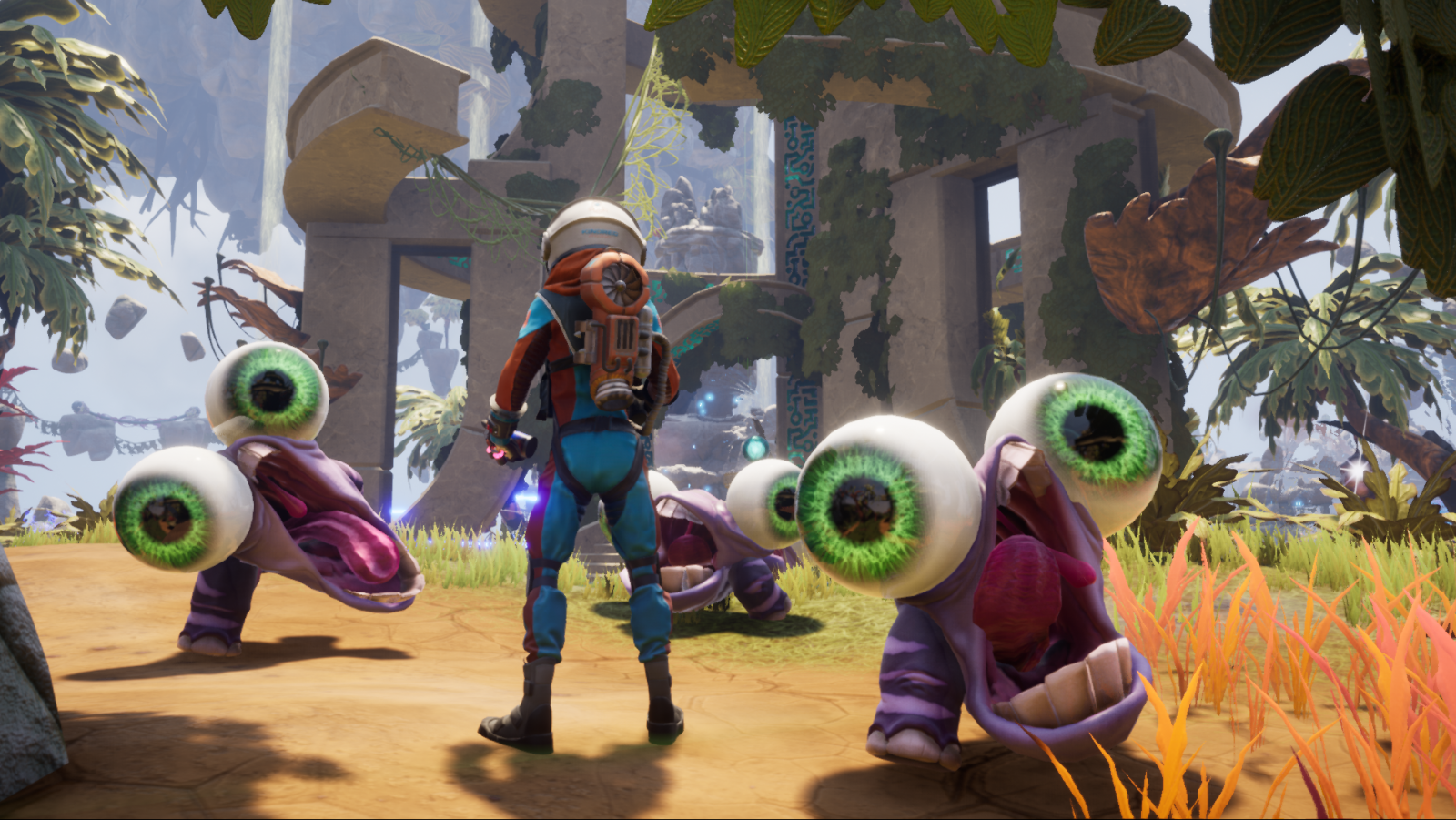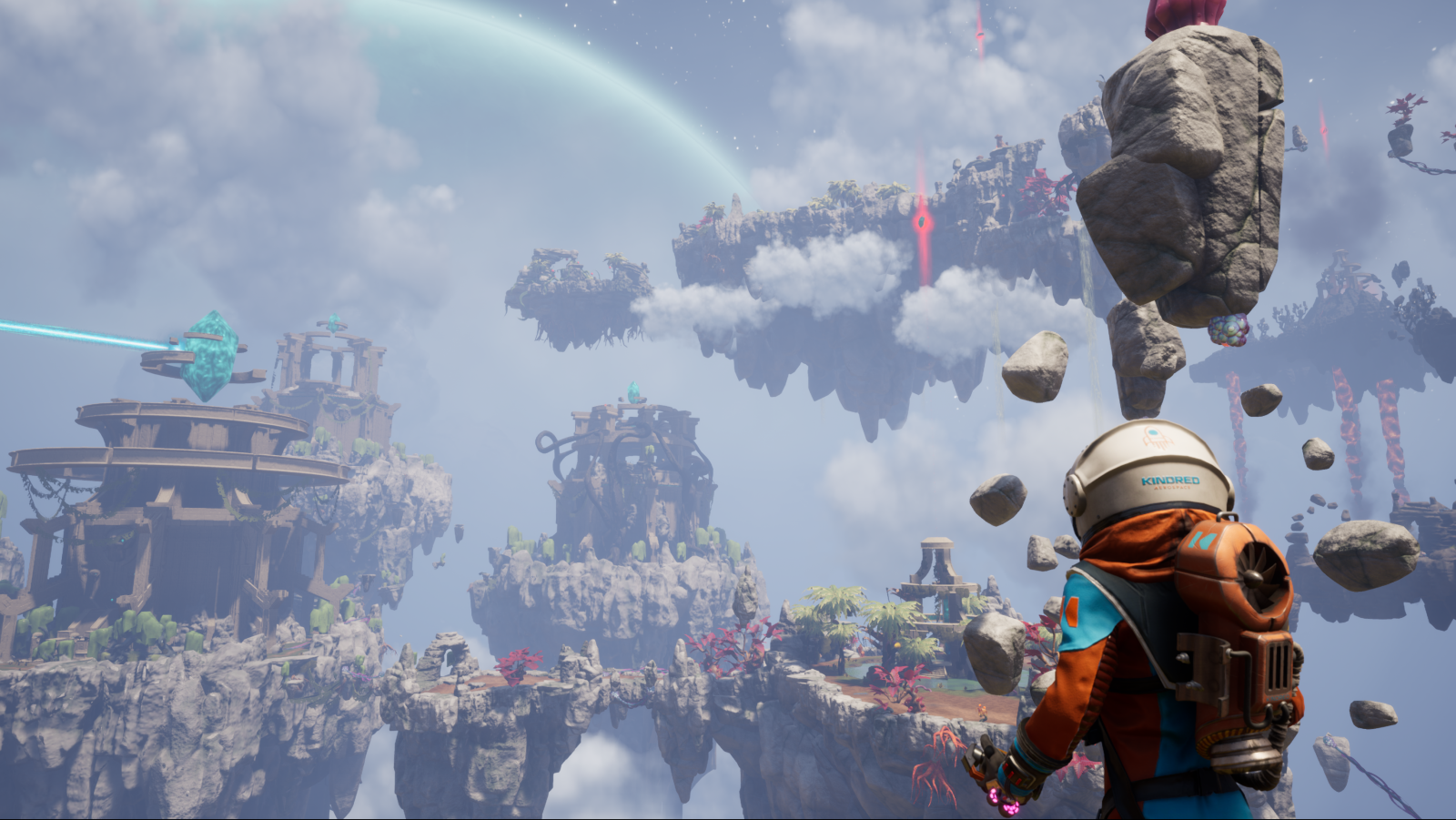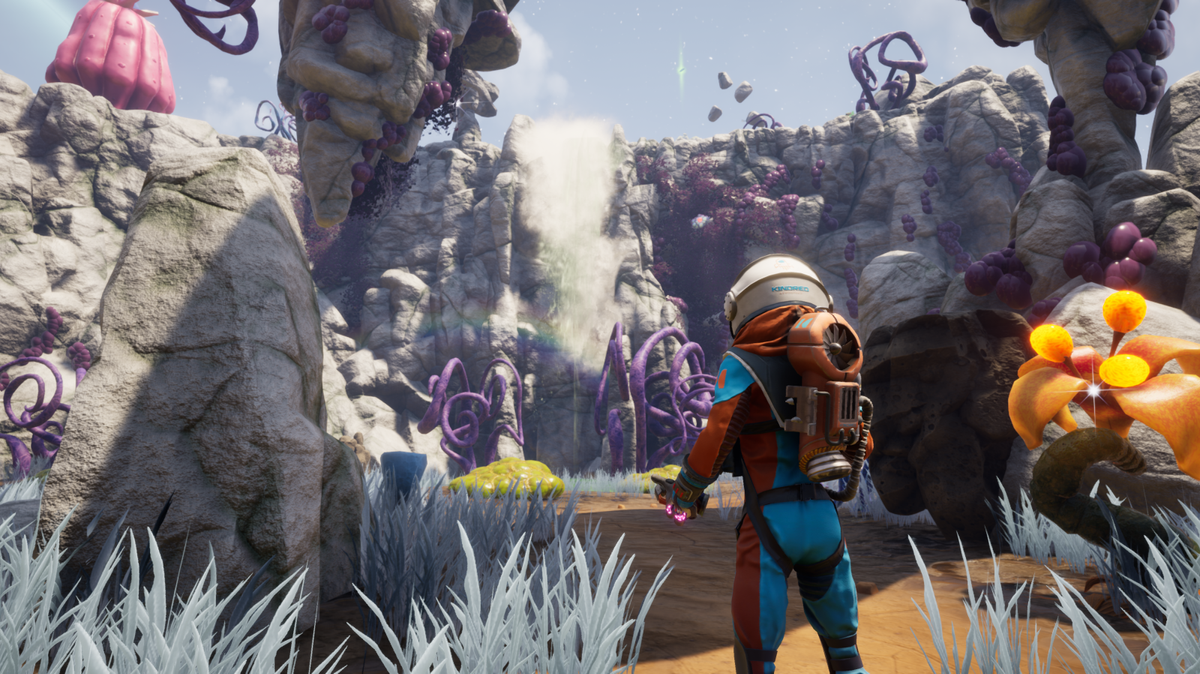
Note: Spoilers ahead, but I will try to keep them to the first level as you’ll definitely want this game in your library.
The open-world genre has exploded in the recent years, especially those in the sci-fi genre where you travel to amongsts the stars in the search of the unknown. A deluge of these games have popped up like weeds, some good and some not worth remembering. But with every few releases, there’s one that stands on its own by borrowing the best aspects of these games and becoming a memorable experience. Journey to the Savage Planet is a game that took some of the best mechanics and styles of titles that we’re familiar with like Borderlands, The Outer Worlds, and even No Man’s Sky, mashed them up, and carved itself into the memory of gamers to be remembered as an amazing experience.
Journey to the Savage Planet feels like the culmination of all the aforementioned games and tries to add its own twist to it, and pulls it off successfully in most cases – meaning that, though the sandbox you get to play in isn’t as expansive as with other games, it’s more rich and fulfilling because it’s jam packed with extravagant visuals, fun platforming elements, and gameplay that’s centered around off-the-cuff humor and bright colors that would make one think they were on a bad acid trip. Everything you see in the game simply pops and stands out as if HDR and 3D were baked into the game. When you are exploring the alien world, the visuals make the world feel as if it’s a thriving ecosystem. Now to be clear, this game is about exploration, collecting minerals to craft items, and discovering new locations in a world that is completely alien. Savage probably isn’t a word I would use to describe the alien life and planet that you will encounter, because the gunplay and threats in the world aren’t very challenging in the sense that one would have when they hear the word savage.
The game drops you into the space boots of the newest bright-eyed Pioneer recruit of the Kindred Aerospace program. You’ll awaken in bed and quickly jump to your feet to find your ship completely broken down on an alien planet. Walking around the ship, the first thing you’ll notice is how deep and rich the colors are. I can’t say this enough. Oftentimes, when inside of a spaceship, the designers will give the ship a rustic look to make it appear as if worn out from countless missions, but not this one. Objects were beautifully detailed and tell a tale of the type of company Kindred Aerospace is, what they do, and what the hell happened to land you in this predicament. Moving about the cabin, a video message began playing of the eccentric employer, Martin Tweed, CEO of Kindred Aerospace. This is where the game lets you know that it doesn’t take itself too seriously and neither should you. The video is an over-the-top message from Martin, who wants you to believe that you’re part of a team and that you must go forth and explore, but he fails to mention the dangers of being a Pioneer. Throughout the game, these messages play every time you enter the ship and give you a taste of how crazy life is working for Kindred Aerospace.
After getting your bearings, the very intelligent yet sarcastic AI system named E.K.O will get your attention and introduce you to objectives. She’ll give you a crash course on what’s available to interact with in the ship and its purpose: a computer terminal for messages, a 3D printer to make weapons and other items, and a few other things you will use when scouring the planet. The first objective – find out how badly damaged my ship was. Exiting the ship, you’ll take the first steps into a world that’s not only new but feels familiar yet alien at the same time. Here is where you’ll have your first real interactions with the HUD and game’s interface, and it is remarkably clean, sleek, and intuitive, not overcrowded with cumbersome sub-menus and overly complicated options. In the upper left corner, you’ll be greeted with health bars and stamina bars. Nothing too fancy, it just does the job.
As I moved about the world listening to the antagonizing AI in my ear, I pressed up on the d-pad. That brought up my scanner which allowed me to not only scan my ship for damage, but also allowed for a digital encyclopedia and storage of information, telling me about anything I scanned: plants, animals, skeletal remains, and more. This comes in handy when looking for certain creatures, dangerous plants in the area, or when scouting for materials needed to use in the 3-D printer. After scanning the ship, I was informed that I needed to find the last piece that had broken off, but my gaming survival instincts kicked in. Before I began trekking across the beautiful alien landscape, my first instinct was to arm myself with anything I could find just in case E.T. tried to attack and burst through my chest as if I were some type of surprise birthday box; and at this moment I experienced the funniest offensive weapon I may have ever had in my arsenal in a game: the pimp slap. No, it’s not actually called that, but it’s literally that. Quickly pressing the attack button will make your Pioneer throw down a quick smack, open hand and all. Holding the attack button down charges the attack and he’ll backhand wildly. Seeing the Pioneer doing this with a space glove on had my side hurting from laughter every time I opted to lay the smack down on something.
As E.K.O informed me of my vitals, which is useless info in the game at this point, I stumbled upon a crate of Grob, a canister of edible food (I use the term loosely) that can be used as bait to attract creatures. After determining how badly my ship was damaged, I was informed that I would be able to use the 3-D printer in the ship to fabricate items needed by collecting the necessary materials from the world. At this point, being an open world game, I opted to not to stick to the script of finding parts, but explored the stunningly crafted world that Typhoon Studios, the developers of this game, had crafted. It’s not as open and vast as many of the other open world games, but it’s denser with alien life and a thriving ecosystem than most games in this genre.
As I made my way into a cave system, it was apparent that the game had taught me much of the main mechanics within the early stages and not opted to save them as I leveled up or progressed like in some games. This was helpful so as to not leave me confused about how to manage inventory, use the 3D printer, or what to do when I come across a bug-eyed goober looking thing that could easily kill me without notice – and that’s where this game differs from much of the predecessors. Games like No Man’s Sky and Borderlands held back many of its systems and mechanics until you ventured further into the game, as to not make you feel as if you’ve conquered and mastered everything at once. With Savage Planet, the game is upfront about what it’ll take for you to progress, and it gives you much of what you’ll need within the first forty-five minutes to an hour into the game.
But this can be a double-edge sword: give away too much and it may make the game feel shallow and not progressive, hold back too long and it may feel like you’re grinding. Luckily, the game pulls it off well in some cases. After exploring the caves, encountering my first alien life forms, (knee-high, bug-eyed goobers) and collecting elements from plants and killing those creepy looking aliens, I was able to use the 3-D printer to create a pistol. Unfortunately, this is where some of the games’ faults begin to show. Aiming and gunplay is mediocre at best and firing the gun doesn’t feel as fulfilling as it should, though the ammo is unlimited so that’s a positive. But as I made my way through the beautifully crafted level, it was apparent that much time and painstaking hours went into the design of the world as to make it feel completely unearthly. Unfamiliar plant life sprouted from everywhere, the landscape was carved out and, in some cases, levitated, creating opportunities for the platforming mechanics of the game to shine.
Encountering more of the wildlife as I pushed forward was refreshing as the developers opted not to simply cut and paste the same plants over and over. What I found is that the bright colored plants are usually for health and leveling up. Eat the right one and you gain a health bar. It’s disgusting to see as it smears across your visor, but when I encountered some of the hostile aliens in the world, it’s evident that you’ll need as much health as possible. Not because they are super challenging, but because aiming and shooting at creatures that move in such a quick and dramatic fashion leaves you open to damage. Luckily, because the game isn’t centered around action and hostile interactions with lifeforms, much of the time will be spent traversing massive caverns, searching new locations, and scanning new life forms for your database and collecting their natural resources.
Exploring takes on new challenges and new equipment is necessary to venture into the depths of this alien world. You will find yourself using a quick travelling system on the planet to travel back to your ship to view messages and use the 3-D printer to upgrade and develop new equipment. Naturally, to reach new heights, I had to collect enough carbon and other raw materials to make a thruster. The thrusters act more like a booster, jet setting you off in a direction of your choice to reach locations unreachable by normal means. You won’t feel like Iron-Man, but you’ll be reaching new heights and finding hidden areas as you explore. And must I remind you, this is a game about exploration. This is something I had to continue to tell myself because, at times, it’s almost as if the game wanted to do more.
During exploration is when little cracks in gameplay and the world become apparent, nothing major, but moments that will immediately pull you out of gameplay. Because this is an open world game, draw distances are set pretty far and objects in the distance often look as if they are of a lower resolution and moving at a slower framerate. This is more jarring when playing on PC like I am and natively running at 4k and at a higher framerate. The controls of traversing the world are simple and confidence inspiring, and I found that to be a problem, especially with a game with the word savage in its title. I never felt as if this beautifully crafted world wanted to eat me alive or challenge me in a way to make me believe it was savage. It was all a façade. Much of the game is about exploring, seeing and experiencing new alien and vegetative life, and boosting your way to new heights to explore hidden locations. The game is incredibly fun and is a great balance of all the other space, adventure, exploration games, but there is a feeling of wanting more of a challenge and a deeper experience in the end.
Journey to the Savage Planet
Great
Journey to the Savage Planet is an amazing experience of alien planetary exploration where the developer’s imaginations were allowed to paint a canvas of fun, art style, and humor that never felt forced or over the top. Once you temper expectations and remind yourself that this is a game about exploration and not an alien shoot em’ up or a fully packed RPG, you begin to realize how special this game is. The game offers 2-player co-op online which many titles like this wouldn’t even think twice about.
Pros
- A beautifully crafted world that doesn't waste space just to say it's expansive
- Level design and colors pop and give a sense of a true alien world
- The humor and banter of the AI and other characters give the game's world a deeper and richer feeling
Cons
- Pop in at times can be an issue, especially when moving through an area with dense vegetation
- Objects in the distance are of lower resolution and slower framerate than objects in the foreground
- The wish of using the 3D printer to create some outlandish items to fit the tone of the game

